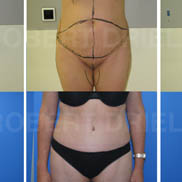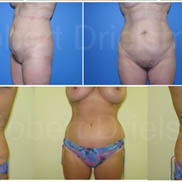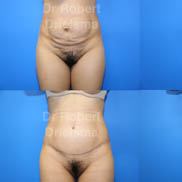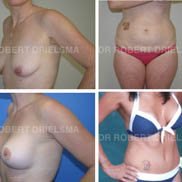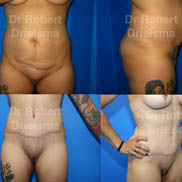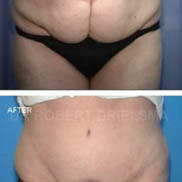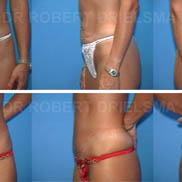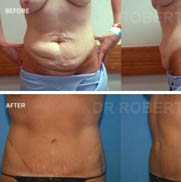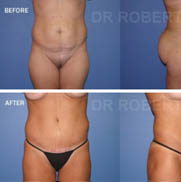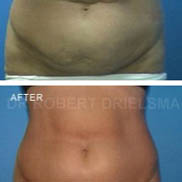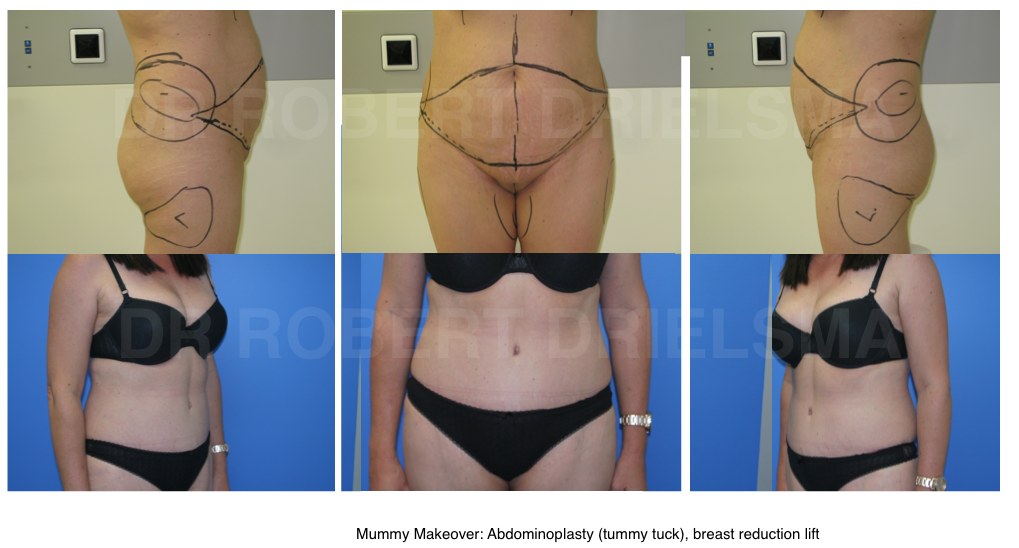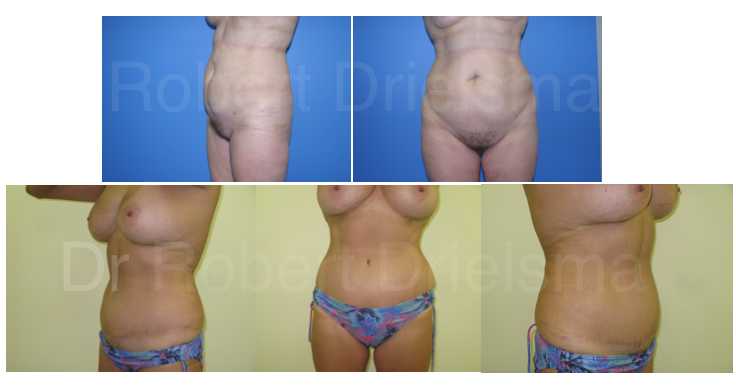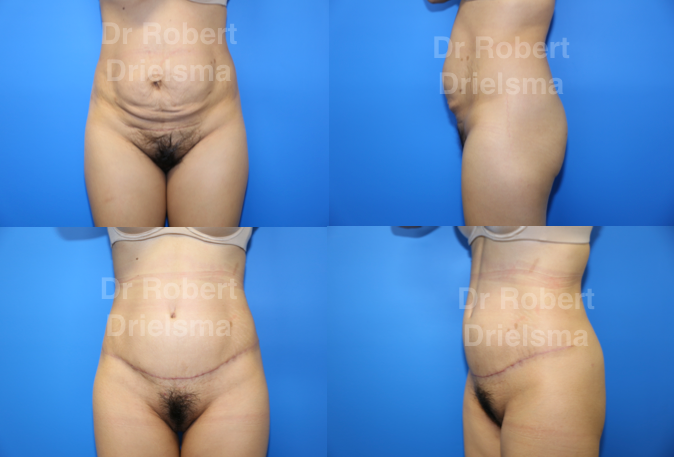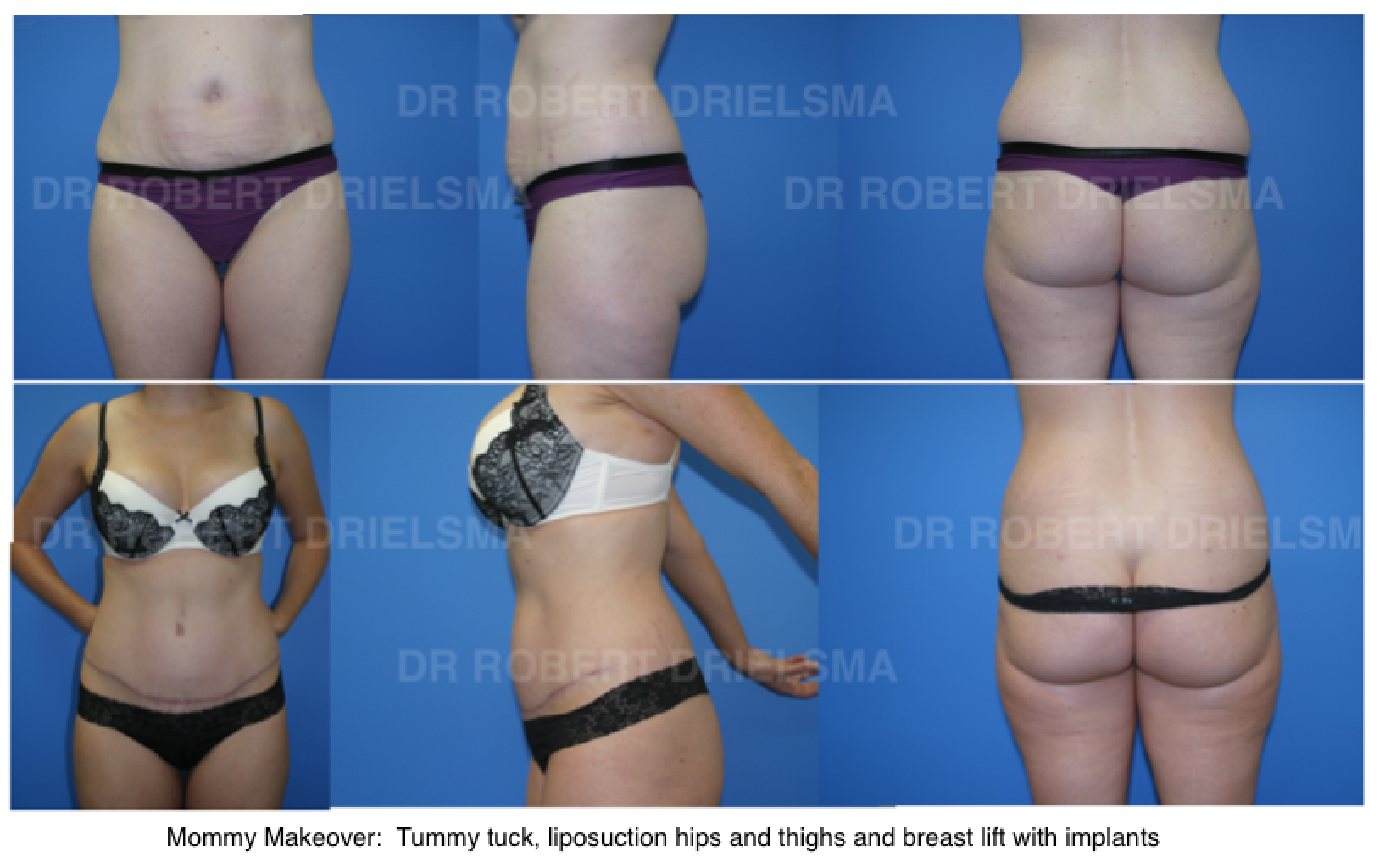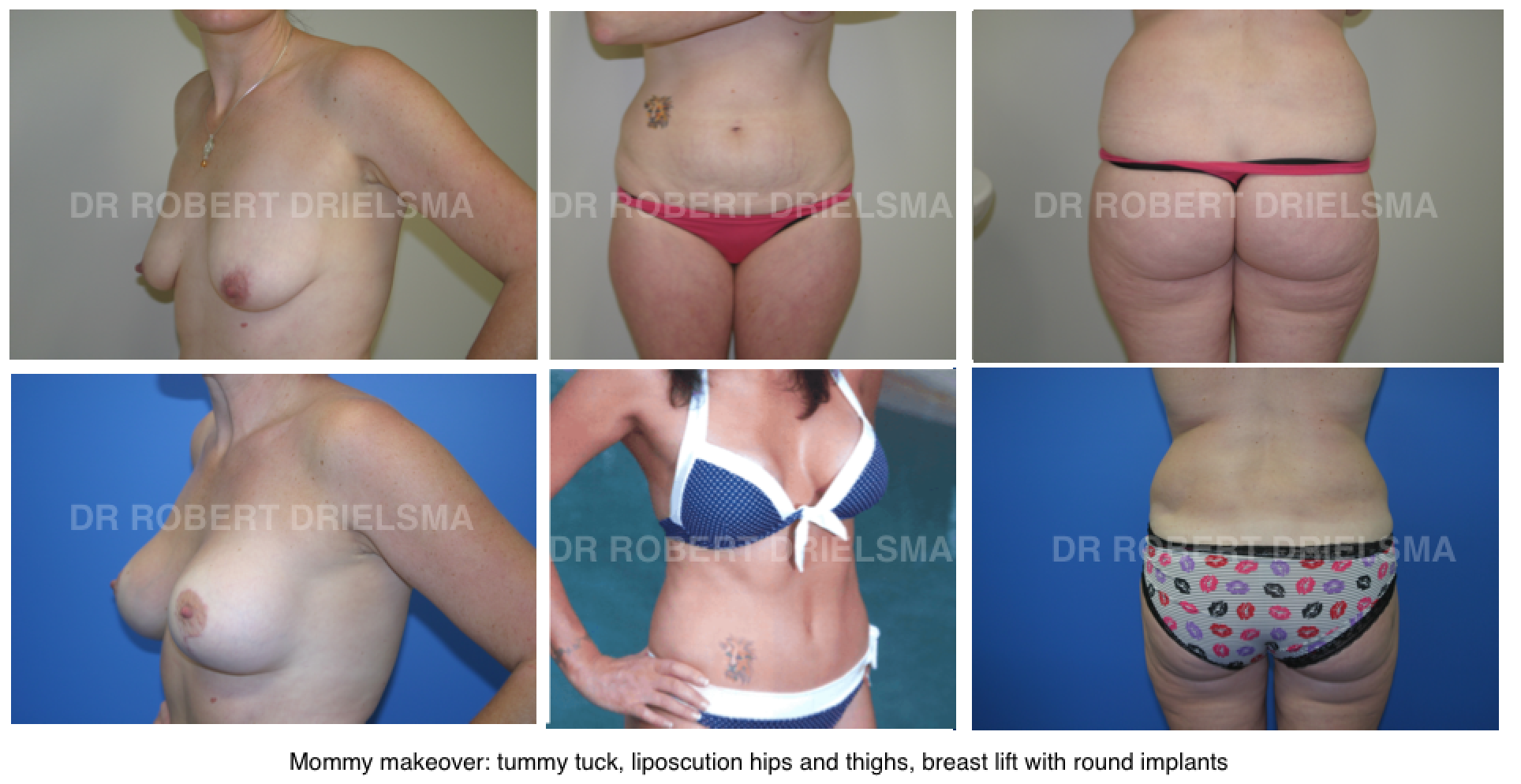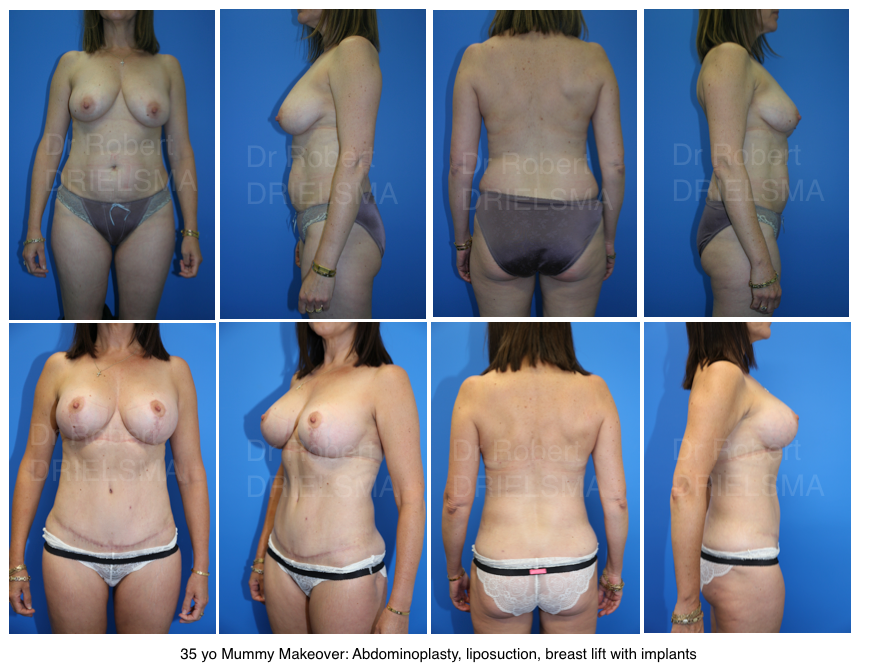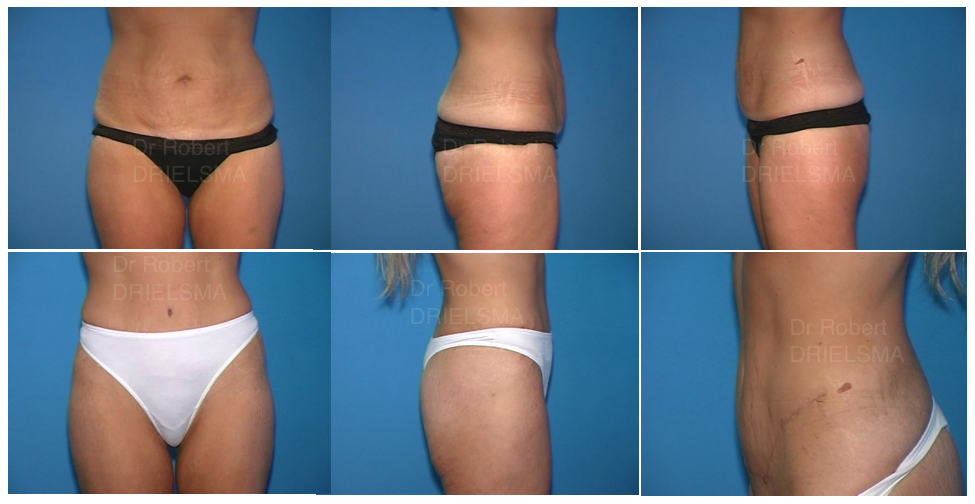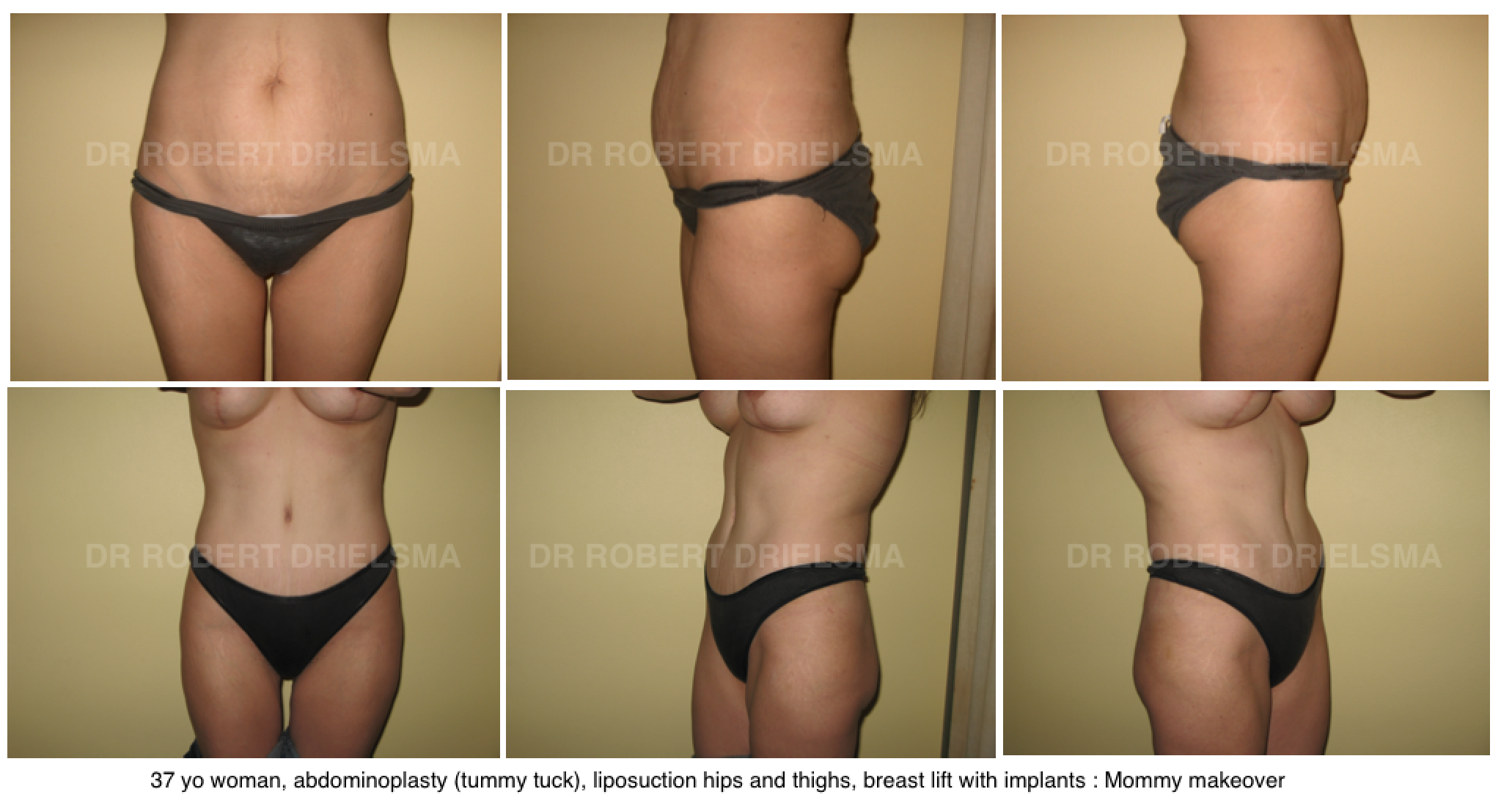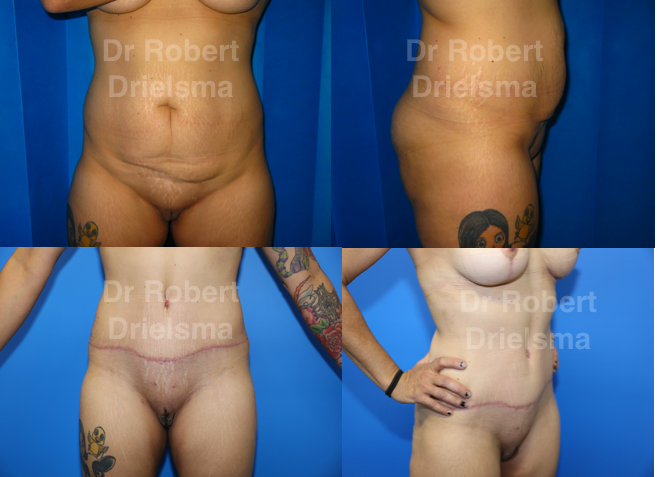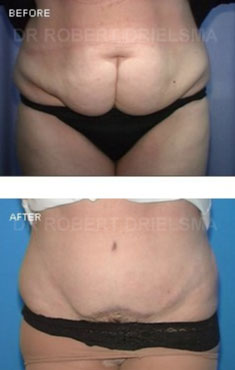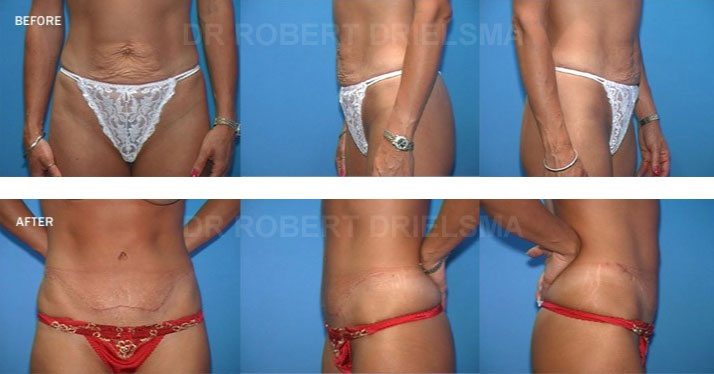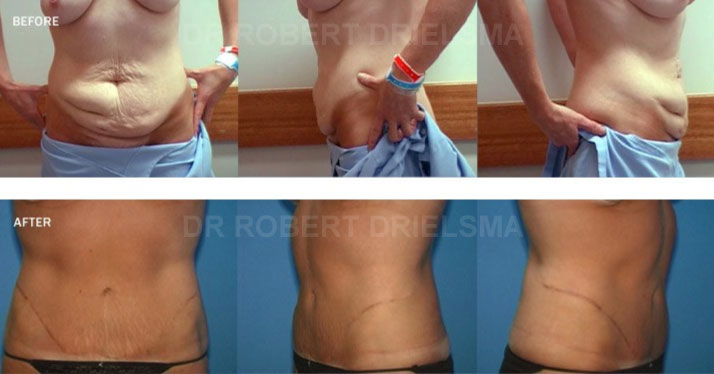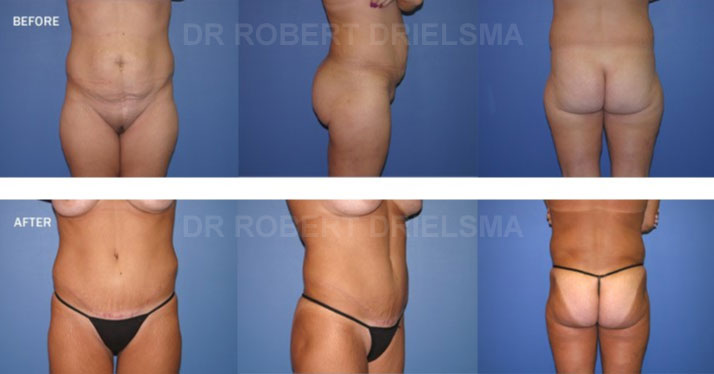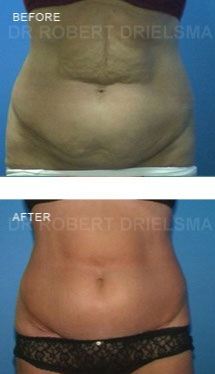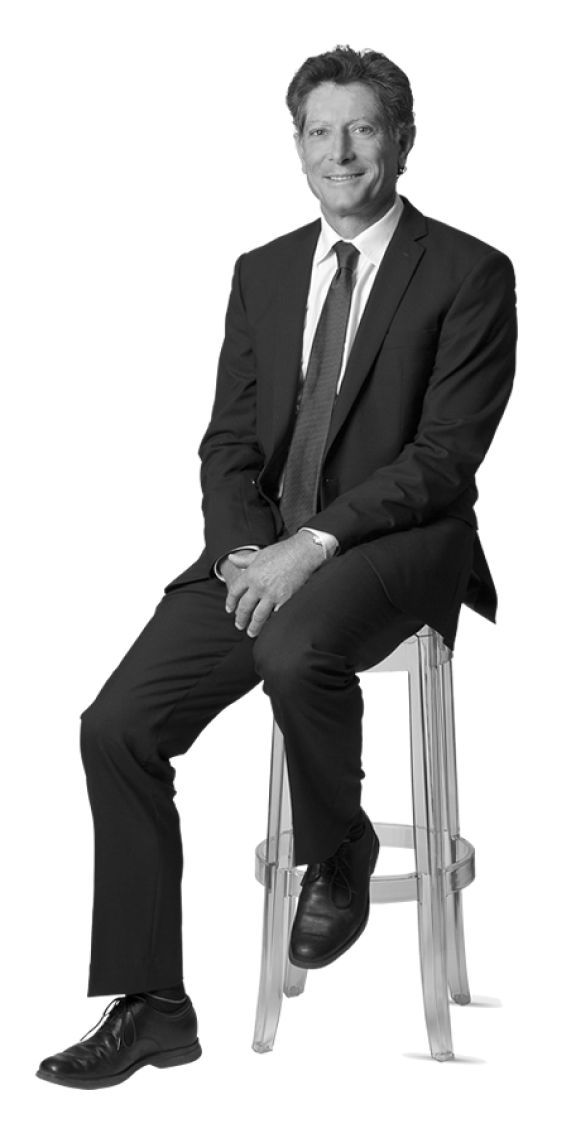Abdominoplasty is generally considered a safe procedure when performed by an experienced surgeon in a fully accredited hospital. Risks of abdominoplasty surgery will be fully discussed wit you by Dr Drielsma prior to surgery.
General risks of surgery
*Wound infection (treatment with antibiotics may be necessary)
*Pain and discomfort around incisions
* Haematoma (which may require drainage)
*Transfusion *Blood clots, deep venous thrombosis and rarely pulmonary embolism (clot travelling to lungs) which may be life threatening
* Keloid or thickened scars
* slow or delayed healing * separation of wound edges
* Chest infection
*Nausea (typically from anaesthetics)
*Complications due to anaesthesia and allergies to anaesthetic agents, antiseptics, suture materials or dressings.
Specific risks of abdominoplasty surgery
*Asymmetry in shape and scar position between the right and left sides of the abdomen.
*Swelling from fluid collection internally (seroma) may require drainage by needle (aspirations) in the surgeons rooms.
*Umbilical necrosis or loss or unusual shape
* some patients report tiredness and discomfort that may persist for some months
*shortness of breath or difficulty breathing occurs in some patients which may be due to tightening of the abdominal wall muscles
*Scarring from abdominoplasty may extend from hip to hip, be or contribute to, unsightly scarring. Scars may thicken and redden over the first 4 to 6 months after surgery but tend to fade and soften over 2 years following surgery. If healing has been poor and scarring is unsightly another procedure may be necessary
*Swelling may take months to resolve in some cases. Abdominal bloating from gaseous distention may occur for many months following surgery in some patients. *Variability in profile shape
*Sensation. Changes in sensation of the lower abdomen, decreased or altered sensation around the abdominal scars and upper thighs is common. Although the altered sensation subsides over several months, some permanent change may persist.
*Circulation may be poor along the scar and lead to loss of skin requiring further surgery and result in a worse looking scar result. Smokers are more at risk.


 Before & After
Before & After